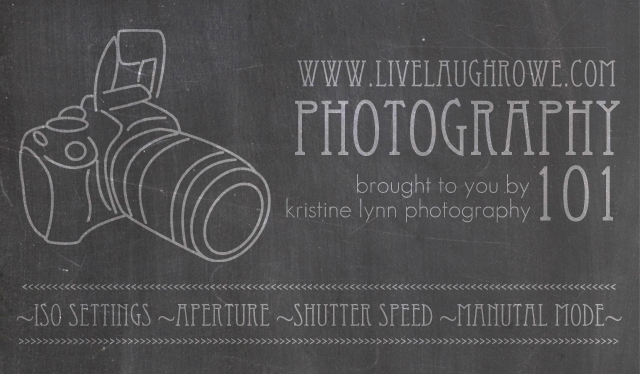Hellow LLR readers! I’m excited to be back today, sharing some Photography 101 tips with you, specifically focusing on your ISO Camera Settings today. For some of you it might be something you’re already very comfortable with, but for others you might be asking, “ISO? What is that?” Today’s your lucky day! {smile}

Now, let’s learn a little bit about your ISO Camera Settings.
Definition: ISO determines how sensitive the image sensor is to light. Higher numbers on this rating mean that the film is more sensitive to light and will expose faster than lower numbered ratings.
ISO was once explained to me as the worker bees. If you have it set at 100, it is like you are sending out 100 worker bees to bring back the light for you. If you set it higher, 1600 for example, you send out more worker bees, 1600 in this case, to bring back light for you. The lower the number the less light. Something to keep in mind about ISO is it can sometimes affect the amount of “noise” in your picture. Noise is when your picture looks grainy or pixilated. If your photo is properly exposed it shouldn’t matter what your ISO is set at because it shouldn’t be grainy. However, don’t get hung up on grain. It can be beneficial to an image. It’s a matter of preference.
The most common ISO camera settings are:
100, 200, 400 and 800…however, depending on your camera it can go as high as 6400. I’ve included a little chart/graph below so you can get a better idea visually.
.

Lower ISO = less light / Higher ISO = more light
General rules & tips for ISO camera settings:
• Use an ISO of 100 or 200 when taking photographs outside in sunny conditions.
• If the sky is overcast or it is evening time, then use an ISO within the range of 400 to 800.
• Night time or in cases of low light you might need to set your digital camera ISO to 1600. If you don’t then your photo will appear too dark if at all.
Go experiment…play with different ISO settings and have fun! Stay tuned for the following Photography 101 tips: Aperture, Shutter Speed and Manual Mode. I’ll be see you in April!





Brenda @ a farmgirl's dabbles says
ISO is something I don’t play around with much…thanks for the reminder, I’ll be adding it to my “must try”!
Beth says
Thank you for helping explain ISO…although I thought knew what it mean, your definition of the worker bees totally brought it full circle for me! Looking forward to your next tuitorial!
Janet says
Thanks for posting this information. I get frustrated with the settings on my camera and should manually set if more often. I will remember what you said about the worker bees the next time I am shooting at night, I love explanations that I can visualize, they stay in my brain. 🙂
Lana @ Never Enough Thyme says
Always good to review the basics!
Lisa | With Style and Grace says
great explanation – love the visuals!
Bonnie and Trish @ Uncommon says
Super explanation and love the visual. Worker bees is a great way to remember it! 😉
Sarah @ Alderberry Hill says
So helpful, this will definitely come in handy for a lot of bloggers!
jaime from crafty scrappy happy says
SO excited about this series! I need to learn! 🙂
Jaime
Rachel (Lines Across) says
I love this series! Even though I’m pretty comfortable with ISO, this tutorial gave me a better understanding, plus it is so easy to follow. I’m definitely recommending this to others!